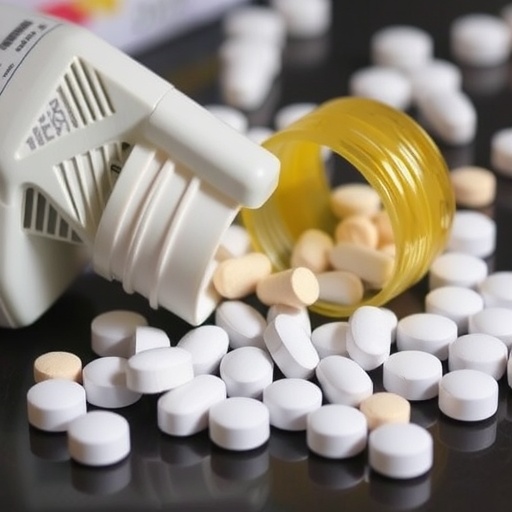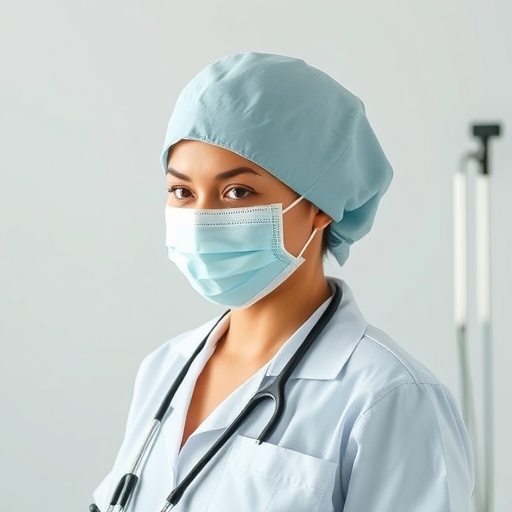
Credit: UAB
A research conducted by the INc-UAB shows that the same perinatal brain injury caused by hypoxia and ischemia have differentiated effects on each gender, but can be improved through tactile and proprioceptive stimuli. Petting and massaging the mice in the first stages of their life provided neurological protection in their adult life, especially in male mice in which the injury was reduced by half.
Perinatal brain injuries hinder neurological capabilities throughout life, causing anything from fine motor problems to severe cognitive limitations. At the same time, therapy treatments currently available are very limited. That is why other types of interventions to help counter these effects are being explored.
Now, a new study by researchers from the Institute of Neuroscience of the Universitat Autònoma de Barcelona (INc-UAB), led by Dr Lydia Giménez-Llort, demonstrates that tactile and proprioceptive stimulation -related to the tactile perception and that of the body’s own position, muscle bone, balance and coordination of movements- improves the effects of perinatal hypoxic and ischemic brain injuries throughout the life of the mice. This improvement mainly benefits male mice, in which the neurological damage is reduced by half.
The study, published in Frontiers in Behavioral Neuroscience, was conducted with mouse models of preterm birth. “We currently know that the immature brain of preterm infants, equivalent to that of mice when born, is at a larger risk for hypoxic-ischemic damage, and male newborns are more susceptible and respond worse to protective and therapeutic interventions”, co-author of the study Mireia Recasens points out. “Our work provides important information on this serious health problem with a damage of 1-3.5 and 6 of every thousand births in developed and developing countries, respectively”.
Sensory stimulation was applied from before the injury occurred until the final stages of infancy, a period in preterm infants equivalent to being born at seven months until two years. The manipulation consisted in tactile and propioceptive stroking and massaging of the mice three times within an eight-minute period, twice a day.
The results revealed that this intervention had a notable neurological protection on both genders throughout their lives, but researchers highlight that the effects were especially positive among males. The histopathological analysis in males demonstrated 50% less brain damage compared to the non-stimulated mice. There was a 30% decrease among female mice. The neurological protection in both genders was correlated to the improvement of functional capacities, reflexes, and an improvement in memory results.
In relation to brain areas, the region involved with motor control and learning and memory (caudate/putamen) was the one to register the largest difference in males, with 80% less damage. In females, the main improvement was a 66% reduction in atrophy to the corpus callosum, a nerve tract connecting the left and right brain hemispheres.
“The study illustrates the preventive and therapeutic potential of these types of stimulations in newborns with brain injuries, in a short yet very intense period at levels of brain development and plasticity. It also gives support to the different scientific approaches advocating for the transcendence of perinatal conditions – from sensory stimulation to maternal contact and a warm and protective environment – and its role as an adjuvant to current therapies”, highlights Dr Giménez-Llort, who is also a member of the International Gender Medicine (IGM) and the ISNA, an international association of sensory stimulation and snoezelen, which studies its effects.
One same injury with different effects according to gender
The research also analysed for the first time the impact of perinatal hypoxic and ischemic brain injuries, demonstrating that although the same degree of neuropathological severity exists, the damage affects each gender’s functional, neurological, cognitive and emotional capacities differently depending on the stage of life and task undertaken.
“During the infant stage, the damage affects balance, particularly among females, and prehension in males, but both aspects improve as they grow and only reflexes remain damaged. Male mice showed to have infantile hyperactivity, which normalises as they became adults. In contrast, the anxiety and emotional traits of these injuries lasted throughout their lives. Both genders showed poorer learning processes at short and long terms, but there was more damage to memory among the males”, explains Aida Muntsant, PhD student at the INc-UAB and first author of the paper. The functional evaluations were correlated with the degree of severity of the affected brain areas: hippocampus, caudate/putamen, thalamus, neocortex and corpus callosum.
Rehabilitation targets
“As a whole, the study shows the different neuronal substrates needed to satisfy functional demands and points to the most resilient neuroanatomical targets to repair these functions through postnatal stimulation”, points out Dr Kalpana Shrisvastava, specialist in neuroimmunology and co-first author of the paper.
“Despite the obvious differences between rodents and humans, the study shows the complex relationship between different regions of the brain, risk factors, vulnerability and resilience, and all dependant on gender and age. It also provides new data on behavioural neuroscience within the field of neonatology and the area of paediatric functional rehabilitation, defining a translational scenario in which to study the underlying mechanisms of the functional and neuropathological correlates found”, concludes Dr Lydia Giménez-Llort.
###
Special edition on infant brain damage
The study was published in a special edition of the journal Frontiers in Behavioral Neuroscience, edited by Professor Rosario Montirosso from the Eugenio Medea Research Institute of the Italian Ministry for Health. The special edition is dedicated to an international collection of new evidences on humans and animals regarding Risk and Protection Factors Associated With Adversity in Early Stages and Infant Development.
The origins of the study conducted by researchers of the INc-UAB includes the collaboration of Dr Lydia Giménez-Llort, Director of the Medical Psychology Unit of the Department of Psychiatry and Forensic Medicine of the UAB, and Dr Laia Acarin, researcher from the Medical Histology Unit of the Department of Cell Biology, Physiology and Immunology. It was conducted under the framework of the La Marató* de TV3 project committed to brain injuries, in a common interest to join forces in solving severe neurological problems arising in infancy and finding mechanisms with which to improve the functional capacities throughout their lifetime.
*La Marató de TV3 Foundation Project, La Marató de TV3 2011-110531 and UAB, UAB-GE-260408
Media Contact
María Jesús Delgado
[email protected]
Original Source
https:/
Related Journal Article
http://dx.




